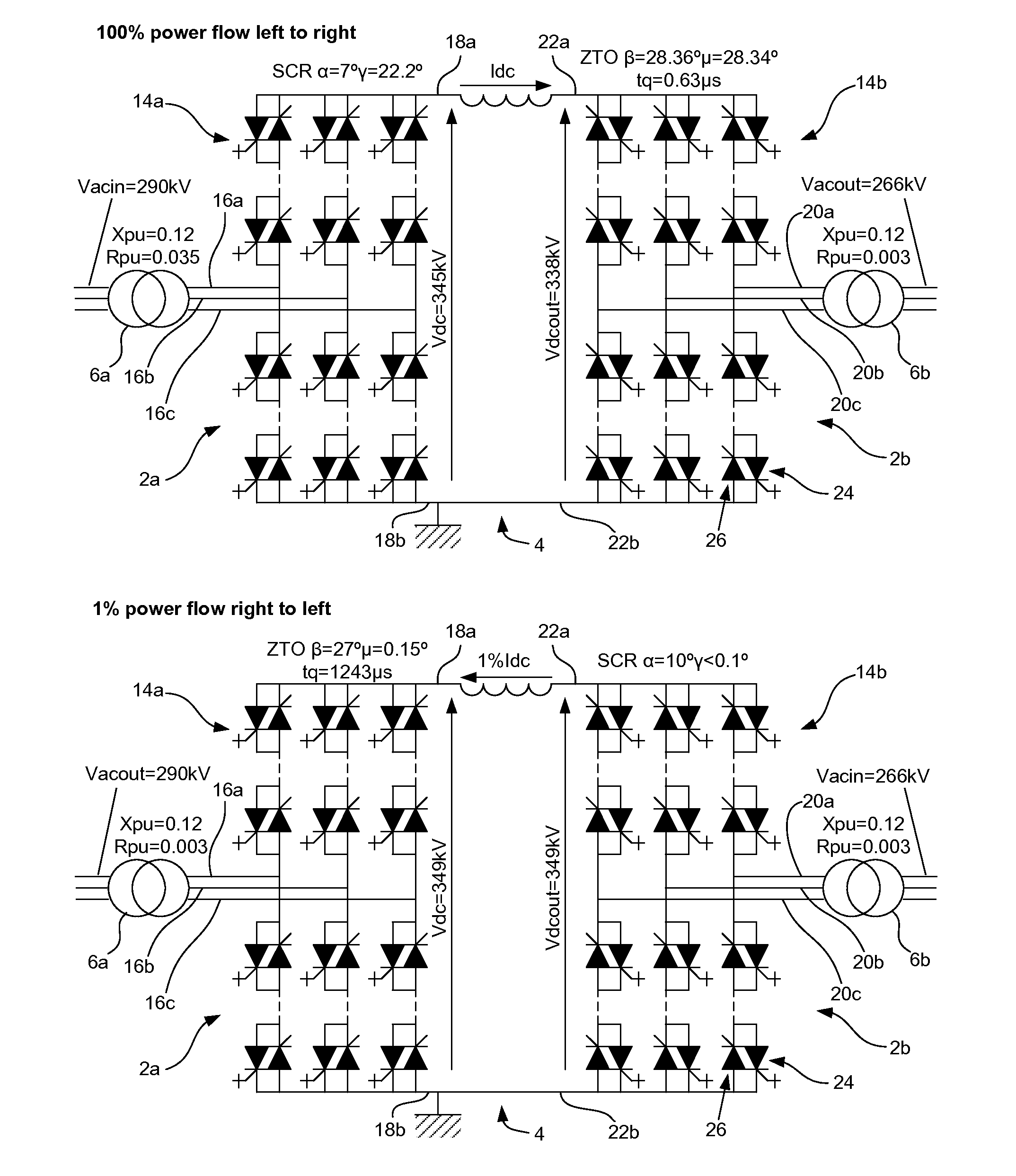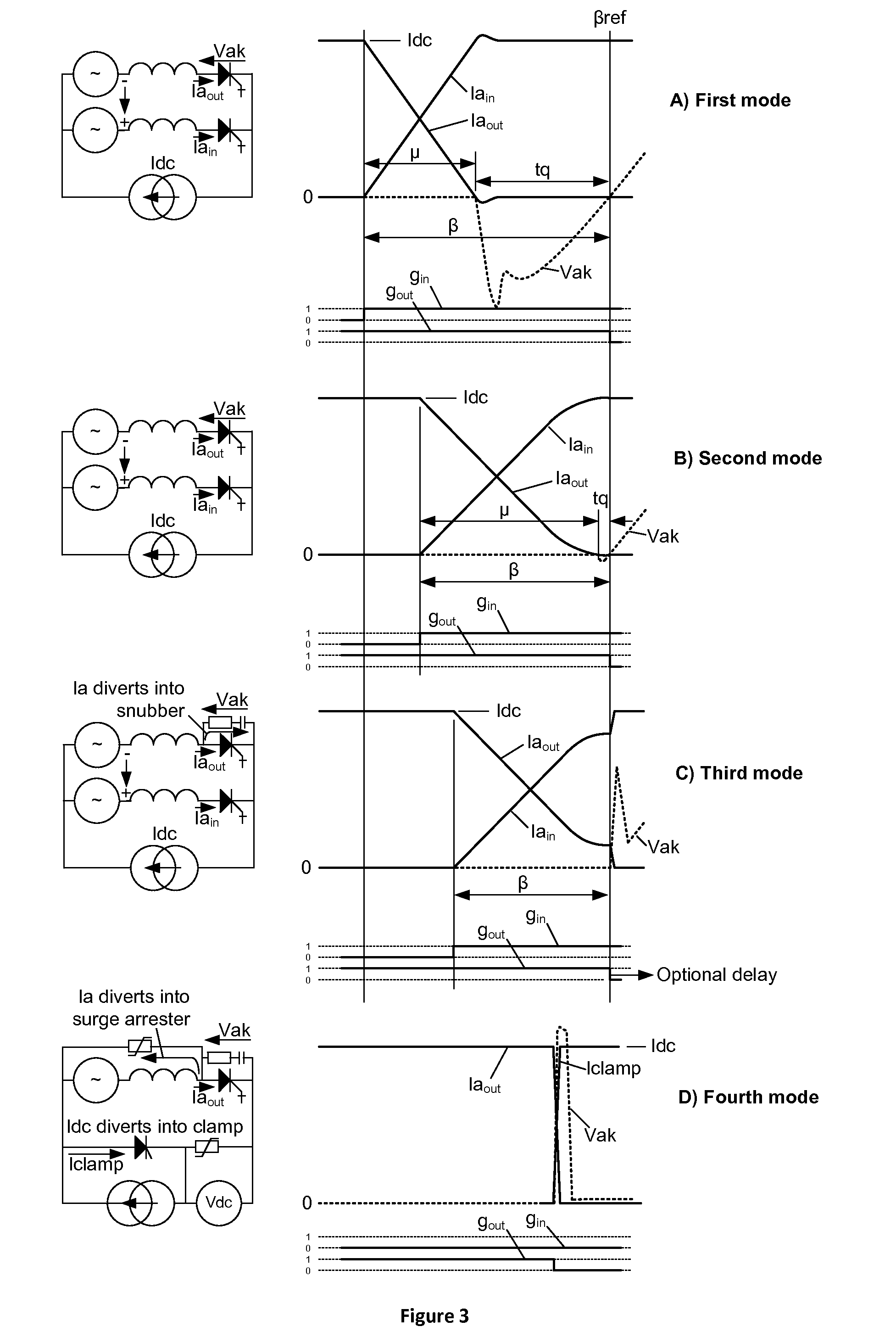Converters
a technology of transformers and transformers, applied in the field of transformers, can solve problems such as increasing to a catastrophic level, and achieve the effects of reducing phase control angles, eliminating transformer inrush, and reducing dc line ripple voltag
- Summary
- Abstract
- Description
- Claims
- Application Information
AI Technical Summary
Benefits of technology
Problems solved by technology
Method used
Image
Examples
Embodiment Construction
[0050]With reference to FIGS. 1 and 4, a point-to-point HVDC transmission link includes a first current source converter (CSC) 2a and a second CSC 2b connected to first and second respective ends of an HVDC transmission line 4. Each CSC 2a, 2b is shown as being a three-phase transformer-fed type with an associated converter transformer 6a, 6b, a series mode voltage source active filter (AF) 8a, 8b, a shunt mode combined active filter and static compensator (AF StatCom) 10a, 10b, and a DC link inductor 12a, 12b. Surge arresters and the control system are not shown in FIGS. 1 and 4 for reasons of clarity. Active filters and filter compensators are not shown in FIG. 4 for reasons of clarity.
[0051]With particular reference to FIG. 4, each CSC 2a, 2b includes a bridge 14a, 14b. The first bridge 14a has three AC terminals 16a, 16b, 16c (i.e., one for each phase) connected to the associated converter transformer 6a and two DC terminals 18a, 18b connected to one end of the HVDC transmission...
PUM
 Login to View More
Login to View More Abstract
Description
Claims
Application Information
 Login to View More
Login to View More - R&D
- Intellectual Property
- Life Sciences
- Materials
- Tech Scout
- Unparalleled Data Quality
- Higher Quality Content
- 60% Fewer Hallucinations
Browse by: Latest US Patents, China's latest patents, Technical Efficacy Thesaurus, Application Domain, Technology Topic, Popular Technical Reports.
© 2025 PatSnap. All rights reserved.Legal|Privacy policy|Modern Slavery Act Transparency Statement|Sitemap|About US| Contact US: help@patsnap.com



